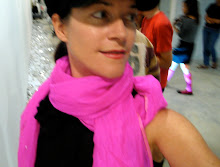I came to graphic design from the past. the deep past, specializing in classical & near eastern archaeology. It was artifacts and pieces of extraordinary civilizations from before that grew this love of documentation. I mean, who are we if we leave nothing behind? What greater challenge than to preserve, package and save snippets of our cultures for an unknown future observer?
" 'No one,' Pascal once said, 'dies so poor that he does not leave something behind.'
Surely it is the same with memories too — although these do not
always find an heir."
— walter benjamin.
Surely it is the same with memories too — although these do not
always find an heir."
— walter benjamin.
There is something of Mnemosyne in all this. Sure we may leave a footprint trail behind, but it will dry out with the time. it's only by being carved or made of stone, by being baked clay, by flukes of volcanic or natural fossil making quirks that things really get passed along down thousands and thousands of years. Our recent abilities to retell collective memories (oral traditions) have faded completely in most western communities. we rely on paper, electricity. Neither of which last long at all.
And yet there are festivals and they often DO connect back.
In Tokyo, I designed my way up from a production artist to an art director to a Media and Design Manager, and the big thing I worked around consistently, was events. promoting, staging, branding, and of course documenting. It was exciting. but my creativity wasn't pushed enough, nor my archaeology. I threw costume parties, followed matruris and in general tried to celebrate. But in the end grad school beckoned and I finally was able to fuse and focus.
I call it the archaeology of festivity. it's a field of research that explore feasts, festivals, processions, rituals — in general very ephemeral communication pieces — for the purpose of preservation, deconstruction, and translation.
This was my first attempt at defining the world I wanted to research. It's a book called Celebrate. It categorizes the universality of the celebration into 6 chapters. Fertility and Harvests, the Sacred, Mapping Power & the prince, the State, the Rebellious & the Personal Journey.
 It was a first statement. An attempt to map out and present, to contextualize and declare that the immersive experience is ancient. It is part of our DNA. it is universal and it communicates. The festival/ritual/dance/procession/pilgrimage communicates. Each communicate culture, identity, history and self. As such they are living threads of the past. they are often 'alive' archaeology. They communicate through immersion through physically engaging the body. They are part of an area of the performance or communication world that I'm calling (at least here in this blog) 'physical communication'.
It was a first statement. An attempt to map out and present, to contextualize and declare that the immersive experience is ancient. It is part of our DNA. it is universal and it communicates. The festival/ritual/dance/procession/pilgrimage communicates. Each communicate culture, identity, history and self. As such they are living threads of the past. they are often 'alive' archaeology. They communicate through immersion through physically engaging the body. They are part of an area of the performance or communication world that I'm calling (at least here in this blog) 'physical communication'.



No comments:
Post a Comment